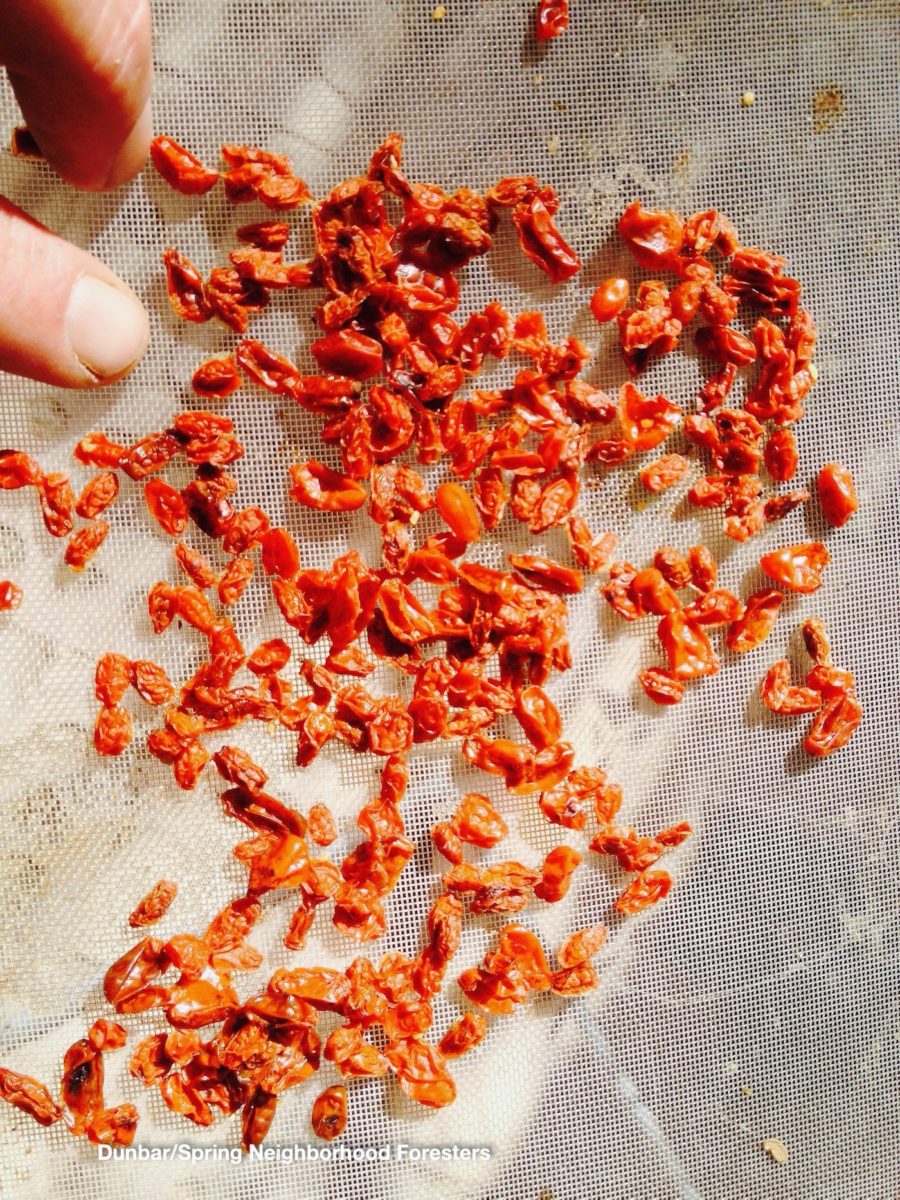Compiled by Brad Lancaster
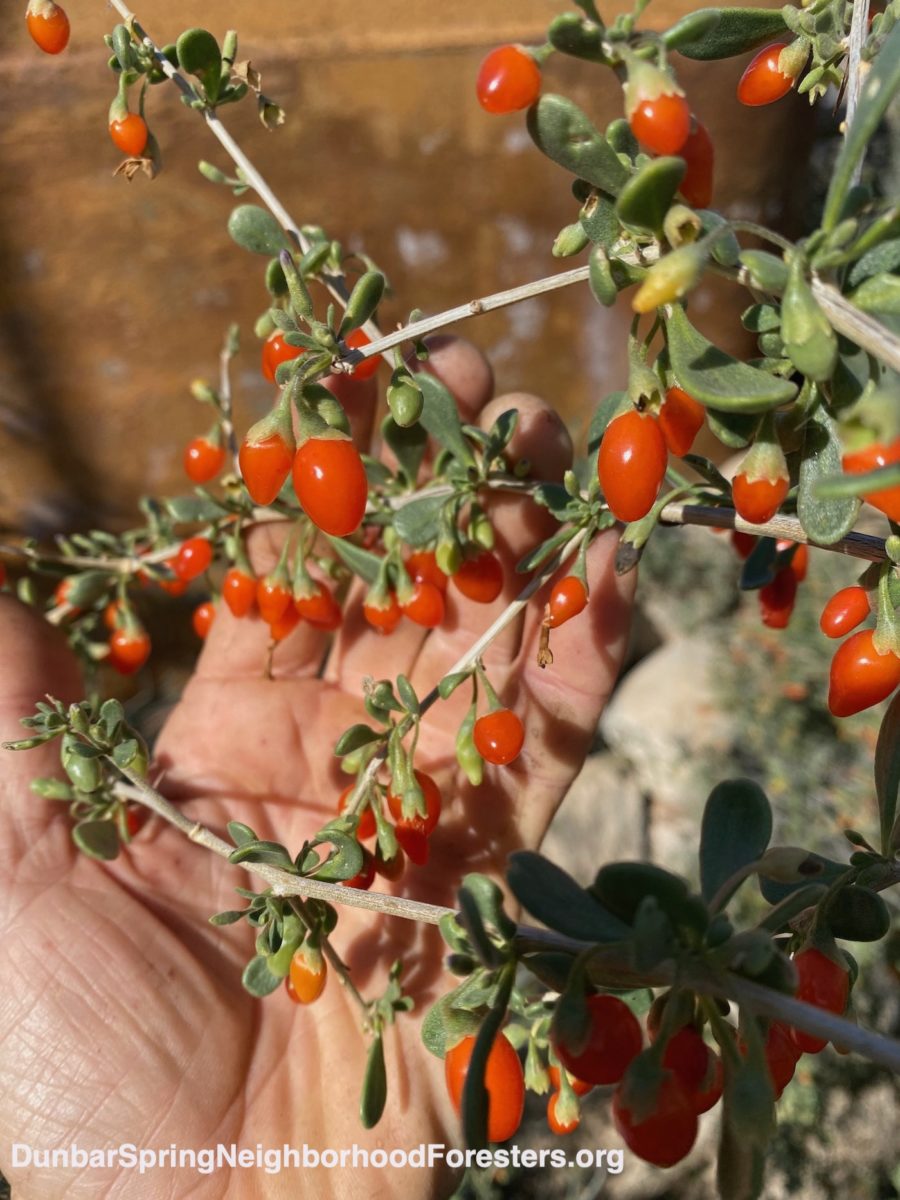
Photo: Brad Lancaster
Lycium spp. –
Wolfberry, desert-thorn, matrimony-vine
(Solanaceae – Nightshade Family):
Spanish name(s): tomatillo
O’odham name(s): kuávul, kuáwul
Characteristics
Dense, weakly-spined shrub of a somewhat irregular form. Grows along washes and on dry slopes. Grows as both under and overstory plant. Full sun to partial shade – works both as an overstory or understory plant. Salt tolerance – high (meaning it does well if irrigated with salty water, such as evaporative cooler bleed-off water). Pioneer.
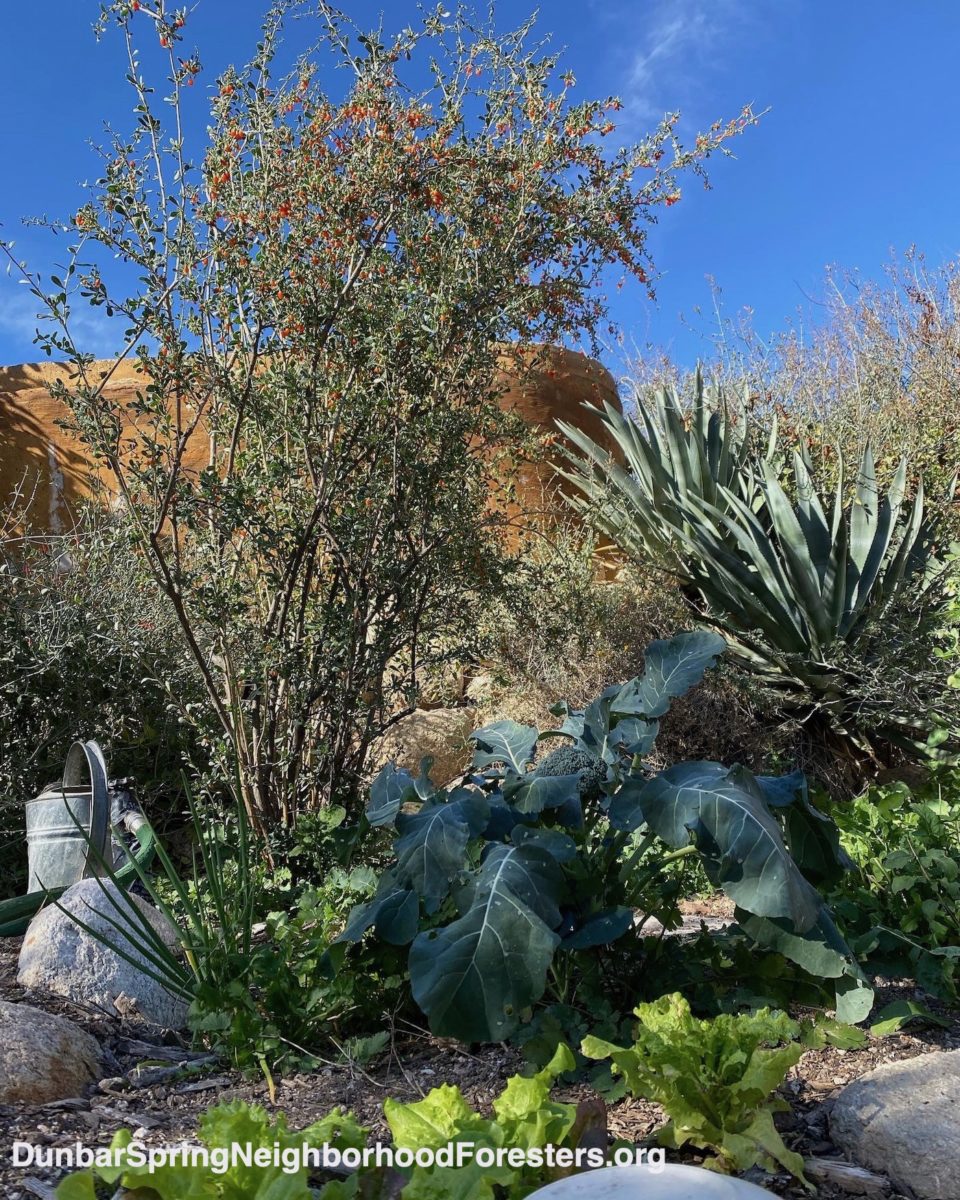
Photo: Brad Lancaster
Wildlife it supports
Flowers attract hummingbirds, bees (winter and spring), butterflies, and sphinx moths; the juicy fruits are eaten by birds; birds attracted to the food and shelter provided include curved-bill thrashers, towhees, phainopepla, and yellow-rumped warblers. The birds then help plant more by distributing seed through their droppings.
Edible
Our native gogi berry, berries are eaten raw, dried like raisins, mashed in water to make a beverage, combined in soups and stews, boiled down to a syrup, and made into a sauce (Niethammer, 1974); these berries were a major food among the Gila Pima (Rea, 1997).

Photo: Brad Lancaster
Other uses
Medicinal (Bigfoot).
Facepaint made from berries (Dahl, 1995); winter forage for livestock (Kearney and Peebles, 1951), (Curtin, 1997); I observed chickens eating the fruit and leaves; good honey plant (Bigfoot); good security screen. Taller species work well as a bush tree, a bush that can be grown/trained into a short tree that can be grown where taller trees cannot (such as under overhead power lines or where you don’t want to block winter sun access-like to south-facing window).
Goats and chickens eat the fruit and leaves.
Guild associates/companion plants
Prosopis velutina, Atriplex polycarpa, Ziziphus obtusifolia, ocotillo, brittlebush.
Water needs
LW (1)
LW = low water 10 – 20 inches of water per year
“1” = no supplemental irrigation needed once established
Rain garden planting zone
TERRACE, bottom
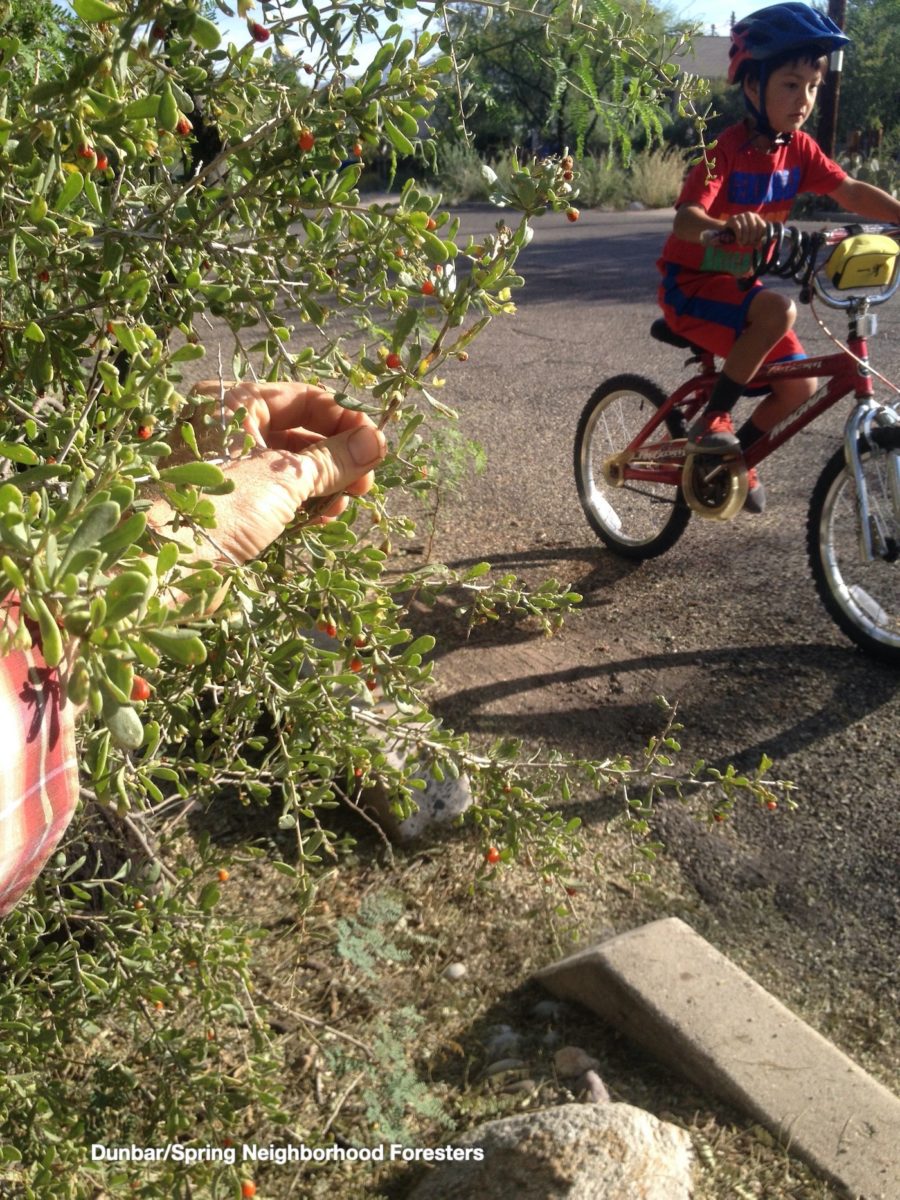
Photo: Brad Lancaster
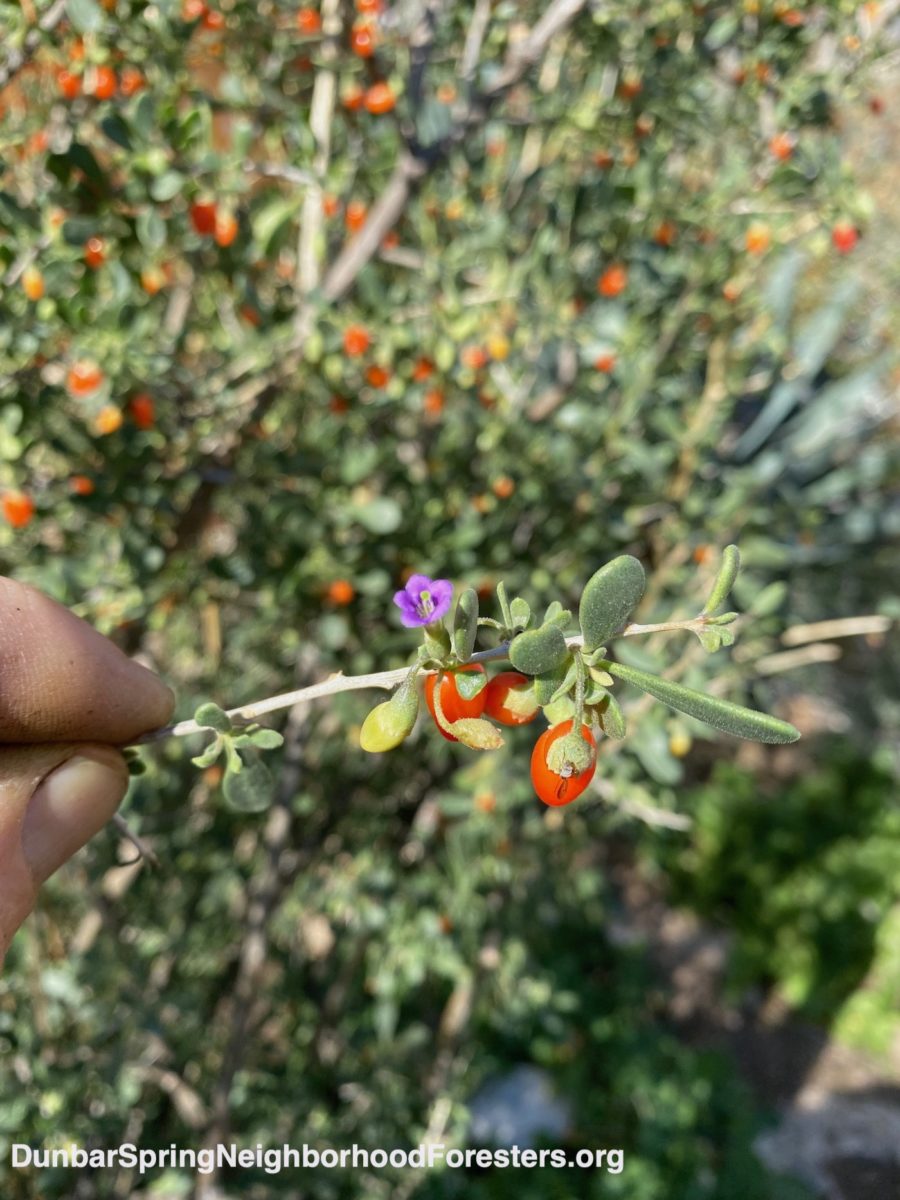
Photo: Brad Lancaster
There are a number of different species of wolfberry native to the Sonoran desert. Here are a few…
Lycium fremontii
Fremont thornbush, Fremont desert-thorn, tomatillo
Blooms year round. Fruits year round (large berries). Found below 2,500′. Grows 3 – 5′ tall. Host of root-rot fungus, Phymatotrichum omnivorum (Kearney and Peebles, 1951). Drought deciduous.
Edible – fruits (Felger and Moser, 1985), (Kearney and Peebles, 1951), (Rea, 1997), (Felger, et al 1992). I’ve found these to be some of the largest and sweetest wolfberries I’ve eaten, though they can be bitter (flavor varies from plant to plant). Sweetness is enhanced if cooked or dried. Fruit can be preserved longer if blanched before drying. I top salads and oatmeal with raw berries, and use the fruit in place of tomatoes for my pasta sauce. In good years plants near Sacaton, AZ seen from I-10 are covered in berries 1/4 – 1/2 inch in diameter.
Other uses – wood used for foreshaft of arrow and violin bows (Felger and Moser, 1985); facepaint from cooked berries (Felger and Moser, 1985). I grow it in my vegetable garden where it shelters less hardy plants from the intense Tucson sun.
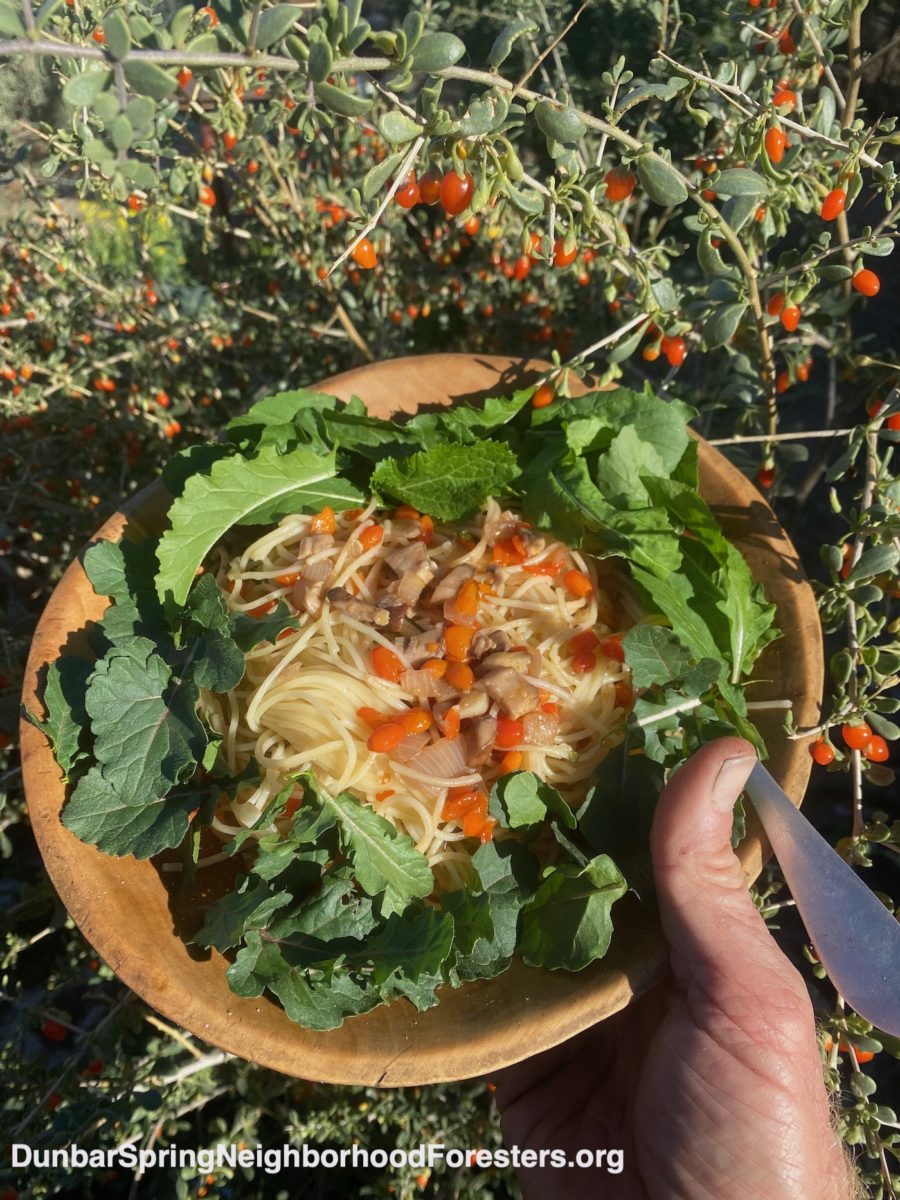
Home-grown, rain-irrigated mustard greens wreath the pasta.
Photo: Brad Lancaster
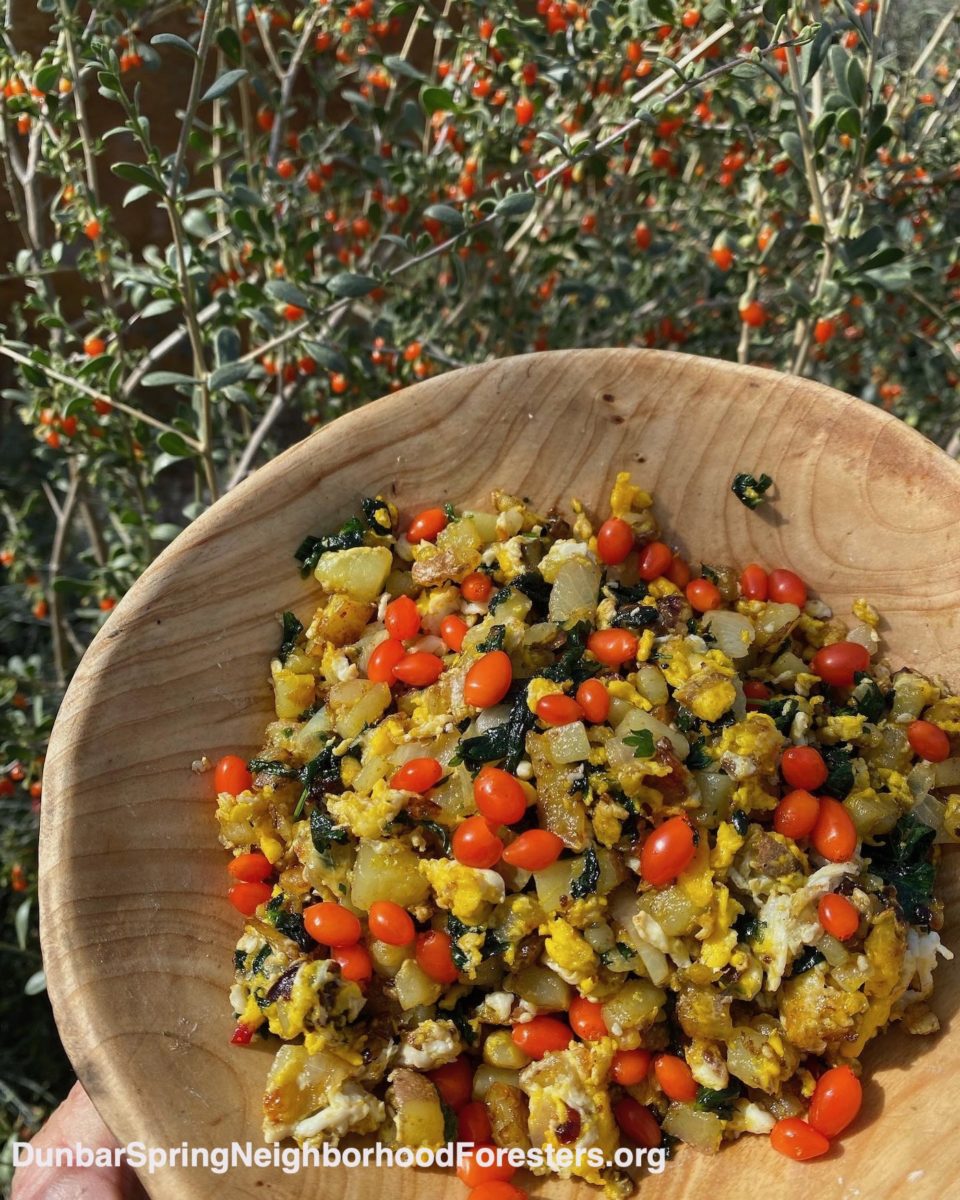
Photo: Brad Lancaster
Lycium andersonii
Anderson thornbush, red-berry desert-thorn, manzanita, saliciesa
Blooms February – April. Fruits April – June. Found below 5,500′. Fleshy leaves and red fruit. Grows 3′ – 6′ tall. Drought deciduous.
Edible – fruits (Felger and Moser, 1985), (Felger, et al 1992), (Ebeling, 1986).
Lycium berlandieri
silver desert thorn, tomatillo, barehata, hoso, joso
Blooms March – September. Fruits May – November. Below 3,000′. Few thorns, dark green leaves. Usually grows 3′ tall, but can get up to 6′. Drought deciduous.
Edible (Nabhan and Hodgson, 1989).
Lycium brevyipes
Blooms March – May. Fruits May – July. Grows 3′ tall. Drought deciduous.
Edible (Felger and Moser, 1985).
Other uses – green berries used as beads (Felger and Moser, 1985).
Lycium exsertum
Arizona desert-thorn, tomatillo
Blooms year round. Fruits year round (large berries). Found below 4,000′. Fine hair covers the leaves, twigs, and flowers. Grows 6′ tall. Drought deciduous.
Edible (Nabhan and Hodgson, 1989), (Ebeling, 1986).
Lycium pallidum
pale desert thorn, rabbit-thorn, tomatillo
Blooms April – June. Fruits June – August. Found at 3,500 – 7,000′. Grows 4′ tall. Deciduous.
Edible (Elmore, 1976), (Kearney and Peebles, 1951), (Curtin, 1997), (Stevenson, 1993), (Facciola, 1998).
Lycium parishii
Blooms February – April. Fruits April – June. Below 2,500′. Grows 3 – 6′ tall. Drought deciduous.
Edible (Nabhan and Hodgson, 1989).
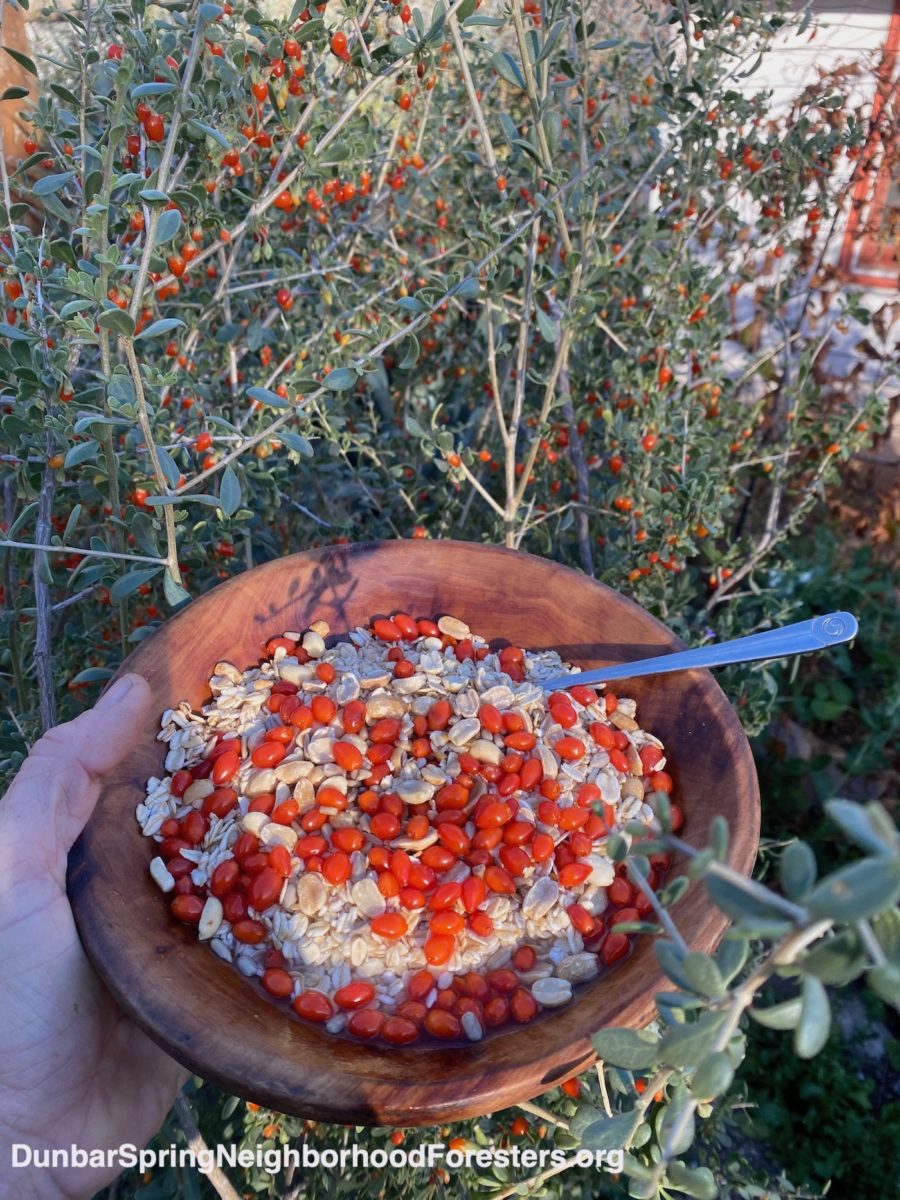
Photo: Brad Lancaster
